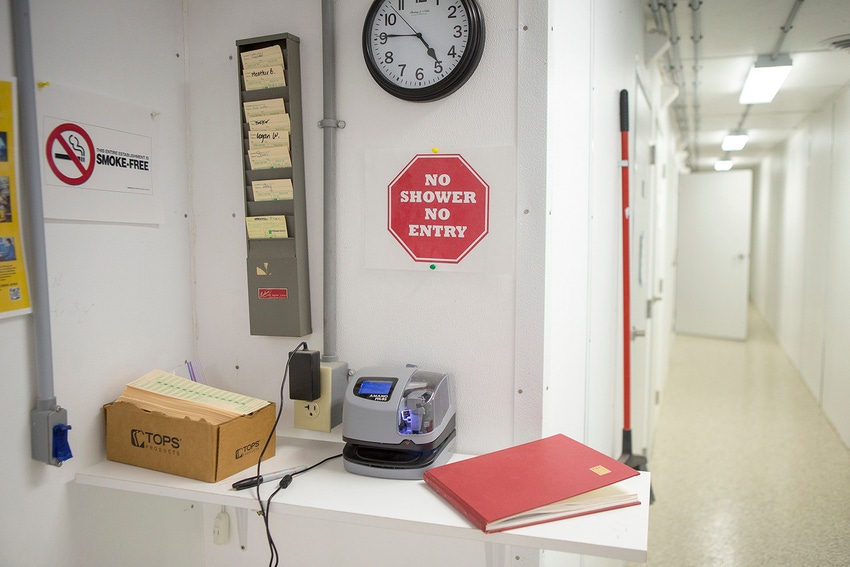Current environment calls for timely review of biosecurity
Sound biosecurity programs are essential to maintaining health within barns. Biosecurity takes work, but those who work hardest at it see the best results.
September 26, 2018

By Andrew DeBoer, DVM, Pipestone Veterinary Services
In the midst of dismal hog markets, trade wars and the recent news of African swine fever and its impact in China and Eastern Europe, it may seem off-topic to discuss biosecurity. However, the argument can be made that just the opposite is true.
In fact, given current market and trade conditions, the impact of disease breaks within swine herds becomes much more impactful. In regard to ASF, the 15th case has recently been reported in China — these four breaks now encompass nearly the entire East coast of the country, an indication that the disease will be difficult to control. As the viral load in China increases, risk of introduction into North America increases, and with it the importance of biosecurity. This point in time lends itself to a review of sound biosecurity practices.
Within the Pipestone System sow farms, biosecurity audits are regularly performed in an effort to ensure biosecurity remains a priority and good practices are maintained. Biosecurity practices on sow farms are generally stricter than those found in wean-to-market or grow/finish barns, but the principle remains the same: reduce potential for disease exposure — mitigate risk. This article aims at encouraging regular “self-auditing” to be performed by producers in barns worldwide as well as discussing a few key areas that can often be cheated, overlooked or altogether forgotten, when it comes to biosecurity.
Downtime and disinfection
Much time and concern is often focused on the entry of individuals into barns — shower in/out procedures, the wearing of farm-specific coveralls/clothes, mandatory downtimes, etc. However, the entry of equipment or objects of any kind can act as fomites (inanimate objects capable of carrying disease). The use of downtime and disinfection rooms is imperative to prevent the potential for disease introduction by fomites. An initiative at Pipestone has been the hand disinfecting of items, moving away from foggers in an effort to ensure disinfectant is applied everywhere. Pipestone Veterinary Services carries many cleaning products to improve pig barn sanitation and the overall health of the herd.
Disease is everywhere
This may not be the rosiest outlook on life; however, having this mindset when working in and around pig barns goes a long way. The eyes of the industry were very much opened to this fact when porcine epidemic diarrhea virus hit in 2013 and the virus was being isolated from gas station counters. A healthy fear and understanding that infectious agents are easily carried along on clothing, vehicles and one’s person, leads to better compliance with biosecurity procedures such as the use of shoe covers when exiting vehicles as well as regular cleaning and disinfection of vehicles.
Practices on farm/moving between sites
As much as is possible while on farm, work should be done from youngest to oldest pigs and likewise healthy to sick pigs. In a similar manner, travel between sites should always be from healthy to less healthy, youngest to oldest. Site management practices that are easily neglected, but equally important, include maintaining a perimeter of at least five feet around buildings that is either rocked or sprayed regularly for weeds as well as regularly filling and maintaining rodent bait stations at regular intervals inside and outside.
Market loads
When loading hogs onto marketing trailers, it is important to follow staged-loading procedure in an effort to prevent animals from backtracking into the barn from the trailer — potentially ushering disease along with them. In a similar manner, truck drivers should not step off of the trailer into the chute and the producer should never find themselves entering into the trailer. Ensure that the chute is washed and disinfected following each use.
Sound biosecurity programs are essential to maintaining health within barns. Biosecurity takes work, but those who work hardest at it see the best results. Given the current market’s volatility, there is no better time to ensure yourself and your team are working hard at promoting health and biosecurity. Regularly self-auditing your barns and staff in an effort to maintain and improve upon sound biosecurity principles will go a long way. Furthermore, maintaining health and biosecurity within your own herd has benefits that extend beyond one’s own profitability — benefits that extend to the U.S. herd as a whole. As we hold our individual barns to a higher standard, the entire U.S. herd stands to benefit by way of reduced incidence of disease and the innumerable advantages that come with good health.
If you have health concerns, or questions regarding biosecurity or the steps the industry is taking in regards to disease protection, talk with your Pipestone (or your local) veterinarian.
You May Also Like



